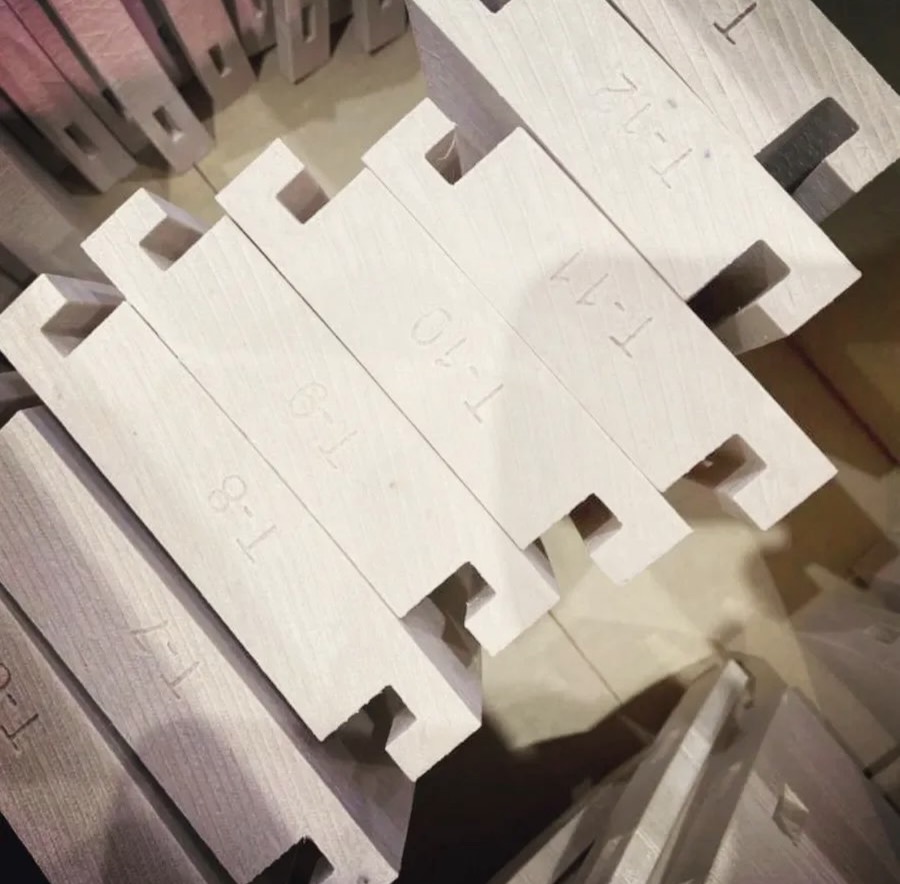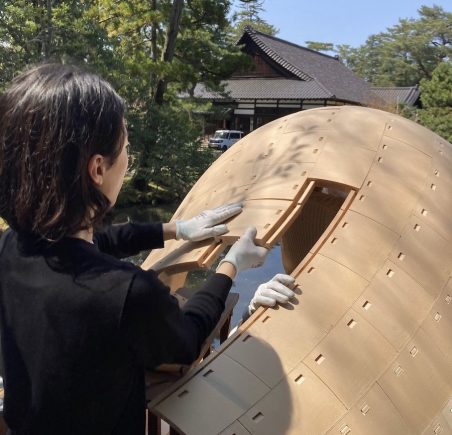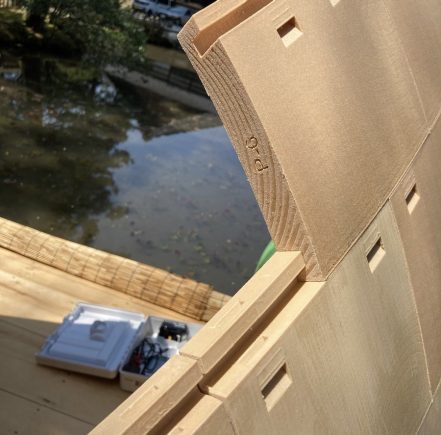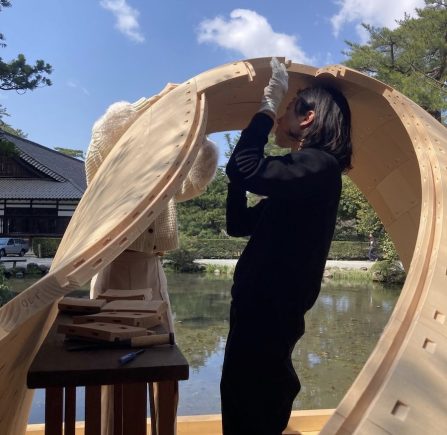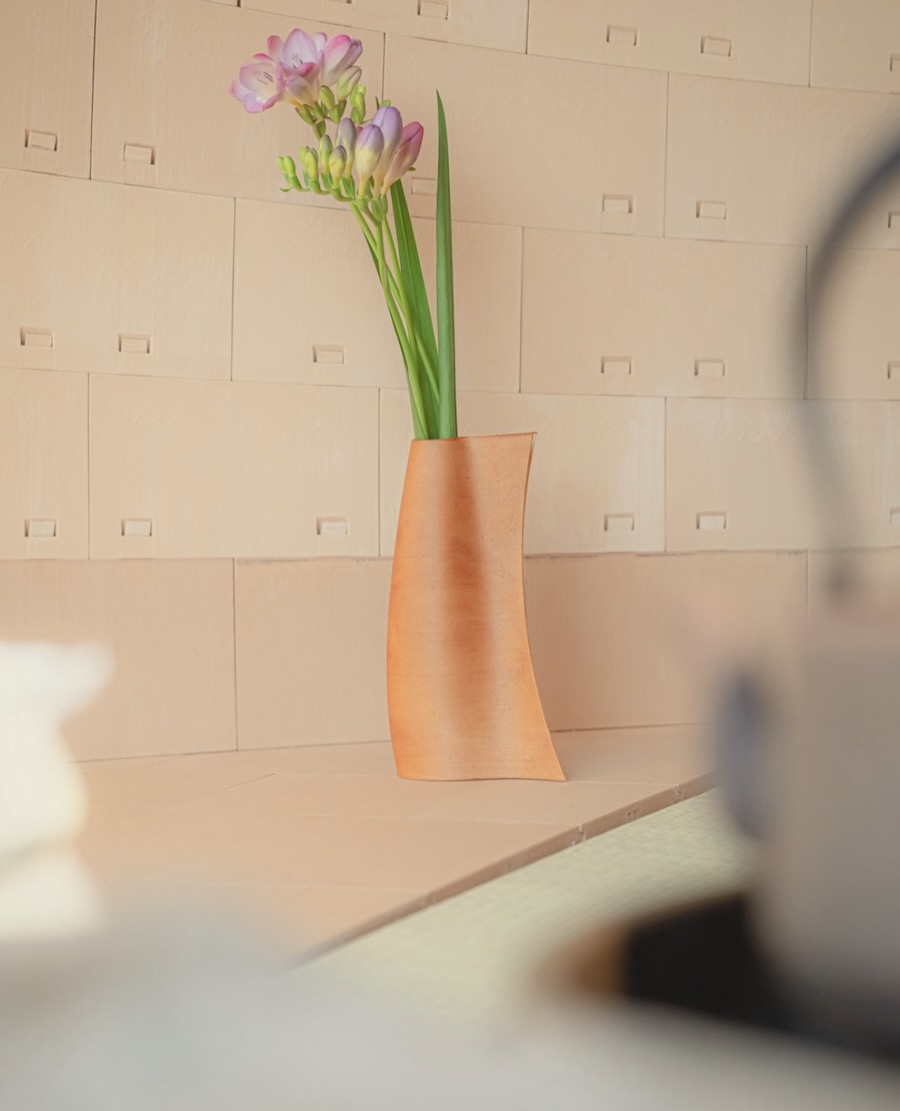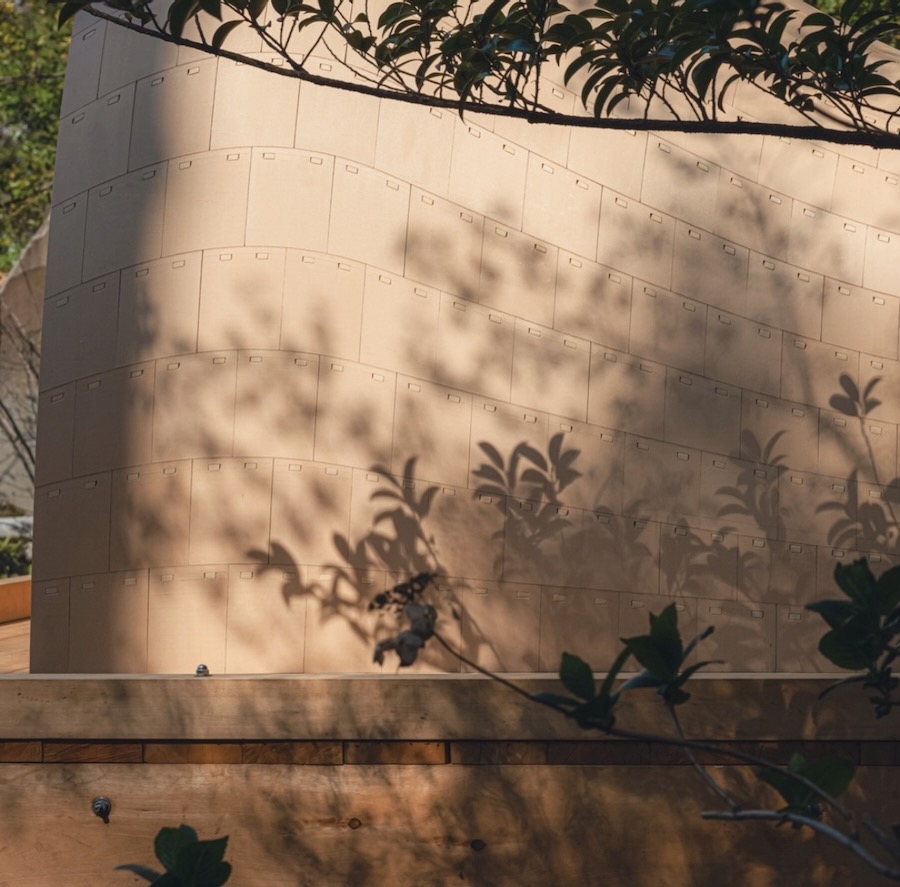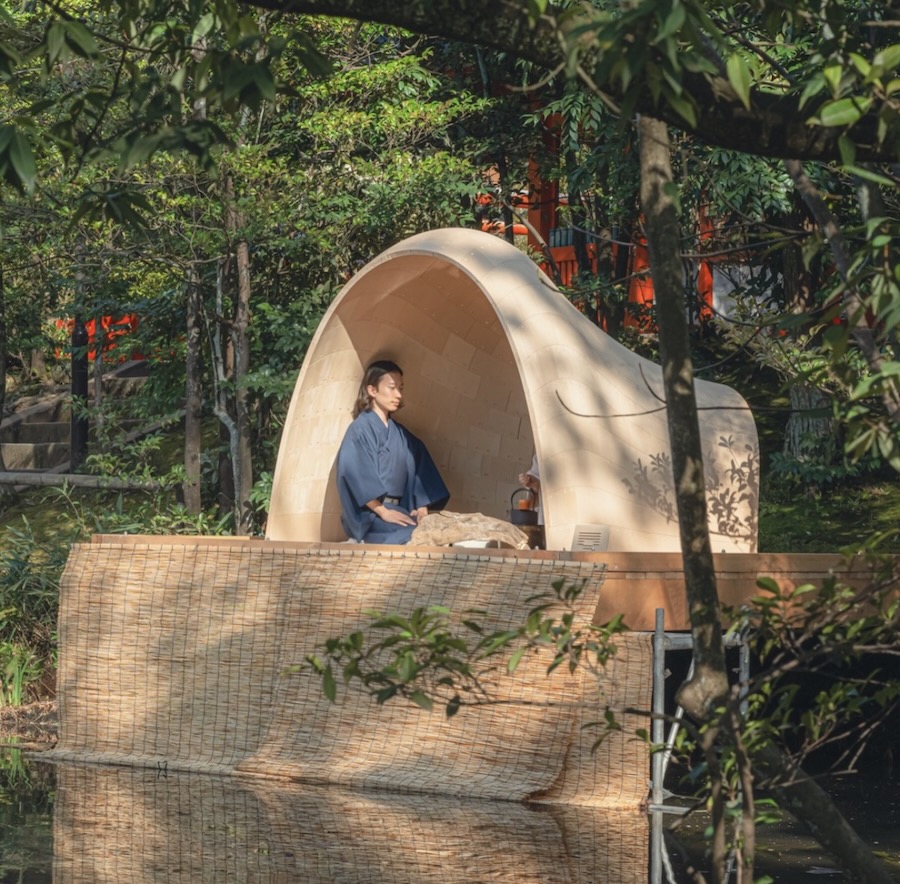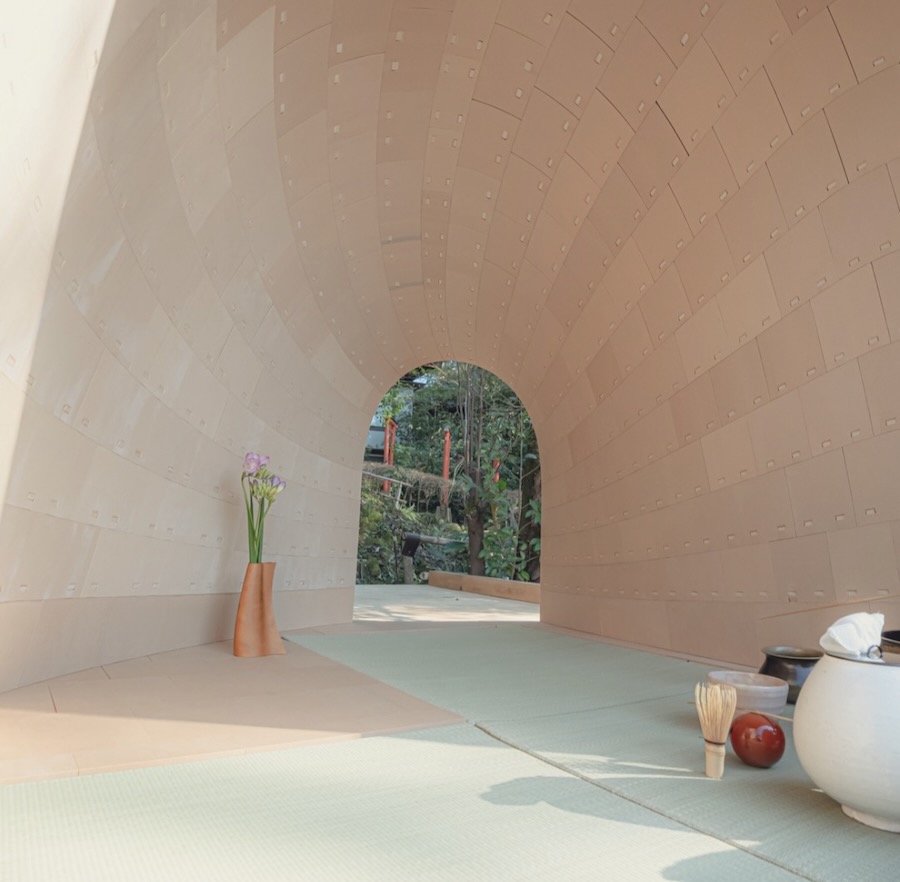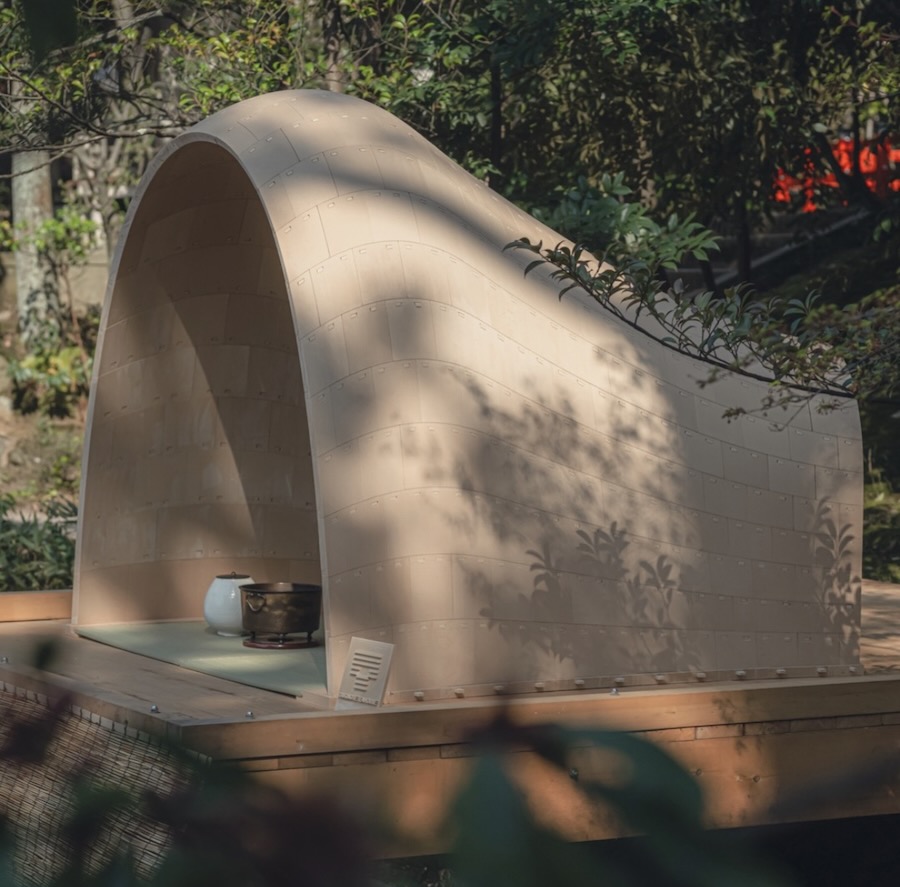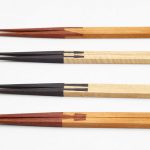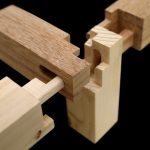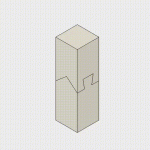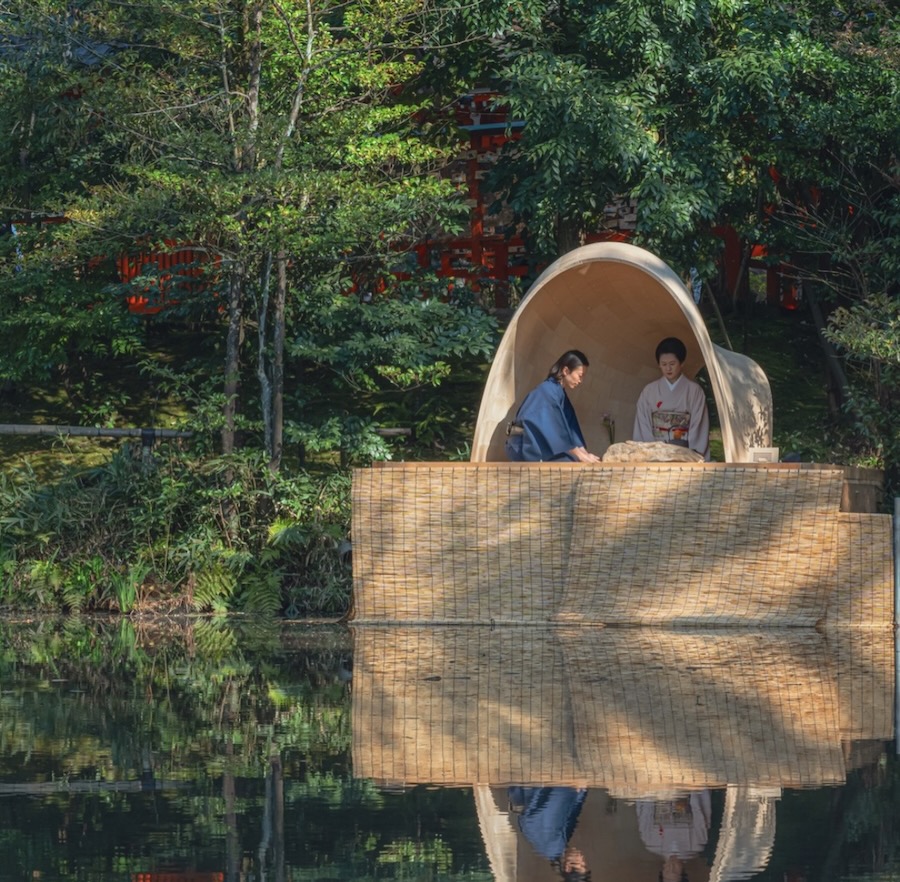
all photos by Eiichi Yoshioka courtesy Kei Atsumi
Japanese wood joinery dates back to the seventh century and is a craftsmanship technique that involves complicated, interlocking wooden joints that form bonds without the use of nails, screws or adhesives. Practical use of these woodworking techniques, known as tsugite, has been dwindling over the years due to their complexity but a team of designers, after 3 years of research, have unveiled a building technique that combines 3D printing with wood joinery.
advertisement
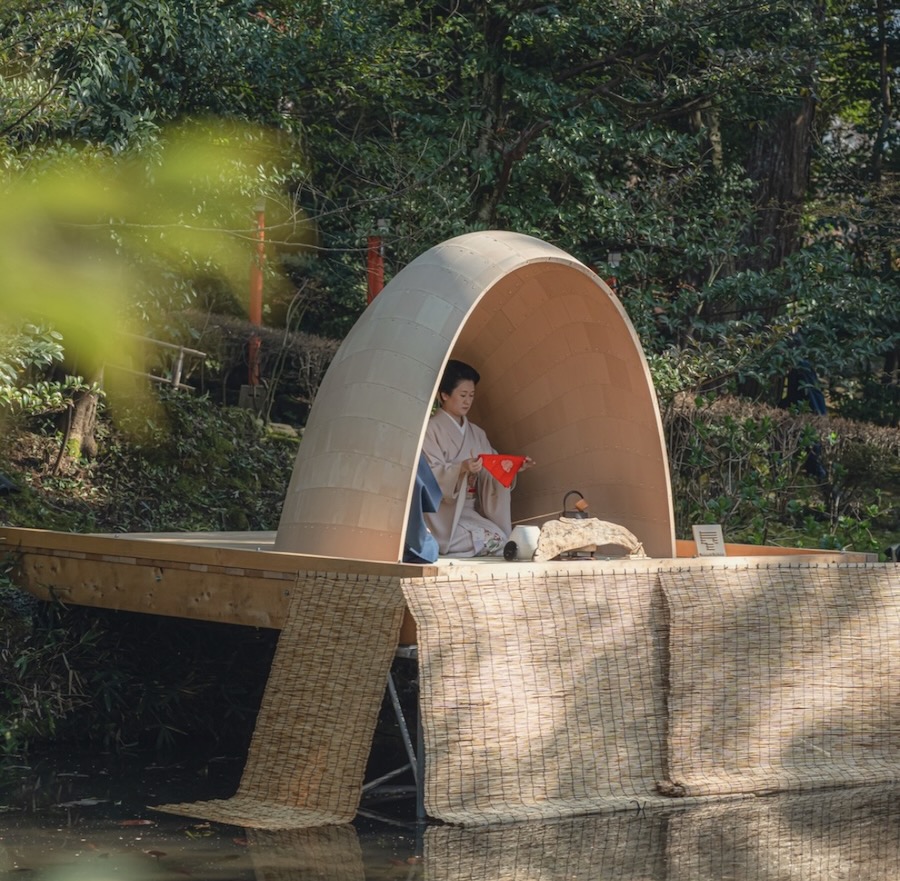
Although it’s been three years in the making, the Tsuginote Tea House took only three hours to construct when it was temporarily installed at Kanazawa Shrine earlier this year. It’s the work of creative director Kei Atsumi and Paris based architect Nicholas Préaud, who created roughly 1000 unique 3D printed double-curved pieces out of discarded wooden chips. The pieces are assembled through interlocking joinery; no screws, bolts or adhesives.
The ancient and futuristic are often pitted against each other but this project is a wonderful example of how digital technology can promote and even expand on traditional practices. Even the name of the tea house, tsuginote, which could read in Japanese as “the next hand” is an homage to the Japanese word for wood joinery: tsugite.
Although the Tsuginote Tea House has since been disassembled, the design team is currently building on their original idea and designing micro homes. You can keep up with Atsumi and Préaud on Instagram.
